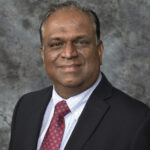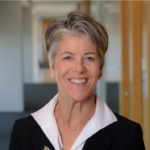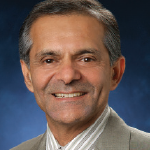 Burnout manifests in healthcare providers as physical exhaustion, compassion fatigue and feeling that work has become meaningless, taking a toll not just on providers, but also on their patients and the healthcare systems in which they practice, said Allen Anandarajah, MD, professor of medicine and associate chair for wellness, University of Rochester Medical Center, N.Y., at a virtual town hall delivered by the ACR on Oct. 27, 2021. However, both individual and institutional ways exist to help reverse its effects, he added.
Burnout manifests in healthcare providers as physical exhaustion, compassion fatigue and feeling that work has become meaningless, taking a toll not just on providers, but also on their patients and the healthcare systems in which they practice, said Allen Anandarajah, MD, professor of medicine and associate chair for wellness, University of Rochester Medical Center, N.Y., at a virtual town hall delivered by the ACR on Oct. 27, 2021. However, both individual and institutional ways exist to help reverse its effects, he added.

Dr. Anandarajah
Dr. Anandarajah and Christine Sinsky, MD, vice president of professional satisfaction for the American Medical Association (AMA), both discussed the causes of physician burnout. They also talked about ways in which hospital administrators and physician leaders can stave off the condition and help physicians restore a feeling of joy to the practice of medicine.
Marcus Snow, MD, chair of the ACR’s Committee on Rheumatologic Care (CORC) and assistant professor of medicine, University of Nebraska Medical Center, Omaha, co-moderated the event with Courtney Wells, PhD, assistant professor of social work, University of Wisconsin-River Falls.

Dr. Sinsky
Nearly Half of All U.S. Doctors Burned Out
Even before the onset of the COVID-19 pandemic, the rate of burnout among physicians was high. Dr. Sinsky said the AMA has been studying burnout for 10 years in conjunction with the Mayo Clinic and, more recently, Stanford University. “Physician burnout has historically been hovering around 50%,” she said.
This occupational distress is important to reverse. According to Dr. Sinsky:
- Physicians experiencing symptoms of burnout are twice as likely to make mistakes;
- Their patients are more likely to be dissatisfied with the care they receive;
- Burnout can contribute to higher rates of physician divorce, death from cardiovascular disease and, possibly, death from suicide; and
- Physician burnout is costly to institutions due to higher rates of turnover and malpractice claims.
When it comes to physician lifestyle, happiness and burnout, Dr. Anandarajah presented a 2020 Medscape survey of 15,000 physicians in various specialties in the U.S. showing that rheumatologists topped the list in terms of being happy outside work (60%).1 When it came to happiness on the job, on the other hand, rheumatologists ranked near the bottom with only 22% reporting being happy at work.2 As possible reasons for the lack of happiness at work, Dr. Anandarajah cited complexity of care, an increased pressure on productivity and issues secondary to rheumatology workforce shortages, which are shown by the increasing likelihood that patients must get on a waitlist to see a rheumatologist.
“We always tell our patients, health is not merely the absence of disease,” Dr. Anandarajah said. “Similarly, we should recognize that joy is not just the absence of burnout. It’s important that we create a safe and humane environment for us to find meaning and purpose in our work, and that would be the first step in restoring the joy of practicing medicine.”
Historically, studies have focused on interventions to help doctors deal with stress, including such strategies as mindfulness practices, coping techniques and cognitive behavioral therapies. But these strategies treat the symptoms rather than the causes of stress and burnout.
Takeaways
“While burnout manifests in individuals,” Dr. Sinsky said, “it originates in systems.” Her presentation, based on a Stanford training course she gives for chief wellness officers, focused on research-based ways in which administrators can fix the workplace rather than attempting to fix the worker. Here is what the research suggests:
Find ways to allow providers to spend more time delivering care than documenting it. In an AMA-funded study, researchers trained medical students to shadow 57 physicians across four specialties in four states.3 The students recorded these physicians’ activities throughout the day using seven different electronic health record (EHR) systems and found that 50% of the work day was spent on EHR and desk work. The physicians also took home one to two hours of EHR work at night, which the study called “pajama time.”
A subsequent study at the University of Wisconsin–Madison School of Medicine and Public Health showed that primary-care physicians spent 50% of the work day on EHRs.4 This study also showed a peak in EHR use during weekend evenings, which Dr. Sinsky called “date night.” Most of these EHR tasks, which may include order entry, billing and coding, do not require a medical school education.
Medical practices and larger institutions that rely on physicians to perform these tasks risk increased physician burnout and financial costs to the organization. Rather than try to train physicians to become more efficient with EHRs, Dr. Sinsky believes empowered nursing is the answer.
Small efficiencies can add up. Physicians in most specialties, including rheumatology, can save three to five hours per day by re-engineering the way work is done, Dr. Sinsky said. This means improving work flow, reducing cognitive burden and taming inboxes and EHRs by strategically delegating work to an upskilled staff.
In rheumatology, for example, ordering laboratory work pre-visit can allow test results to be discussed during a patient’s appointment rather than requiring a subsequent phone call or office visit, saving 30 minutes of physician time per patient.
According to the AMA’s Saving Time Playbook for Physicians, which Dr. Sinsky co-authored, other time-saving measures include good prescription refill management, expanded rooming, empowered nursing and annual wellness visits to reduce patients’ acute care needs.5
Pre-visit planning and lab work can also help physicians decrease the number of emails they receive, particularly when seeing a rheumatology patient for ongoing follow-up. For new patients, if a rheumatologist has a close relationship with the referring physician, she suggested finding ways to encourage the referring provider to set up pre-visit lab appointments. “The way we do this in my own practice is we keep the mantra, ‘The next appointment starts today,’” she said.
Explore the AMA’s STEPS Forward website. The site features toolkits with checklists and calculators to determine time and cost savings and help physicians plan ahead. It also includes videos and success stories showing how these innovations can be implemented.
Missed the town hall? Watch the recording here.
Renée Bacher is a health and medical writer based in Louisiana.
References
- Medscape. Rheumatologist Lifestyle, Happiness & Burnout Report 2020, slide 2. 2020 Feb 12.
- Medscape. Rheumatologist Lifestyle, Happiness & Burnout Report 2020, slide 3. 2020 Feb 12.
- Sinsky C, Colligan L, Li L, et al. Allocation of physician time in ambulatory practice: a time and motion study in 4 specialties. Ann Intern Med. 2016 Dec 6;165(11):753-760.
- Physicians spend more than half of work day on electronic health records. University of Wisconsin–Madison School of Medicine and Public Health. 2017 Sept 11.
- Jin J, Reimer J, Brown M, Sinsky C. STEPS Forward Saving Time Playbook for physicians. American Medical Association. 2021.


